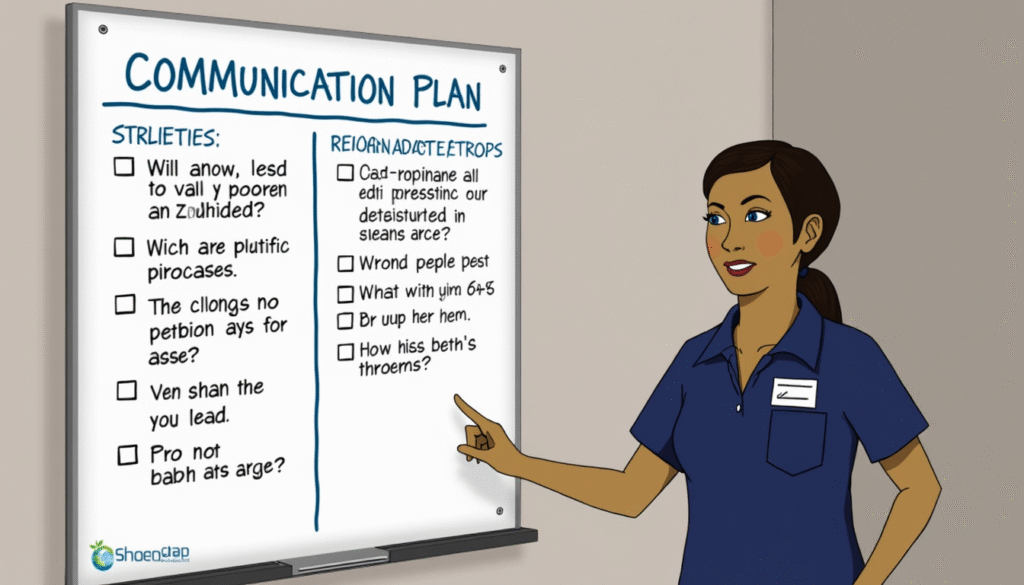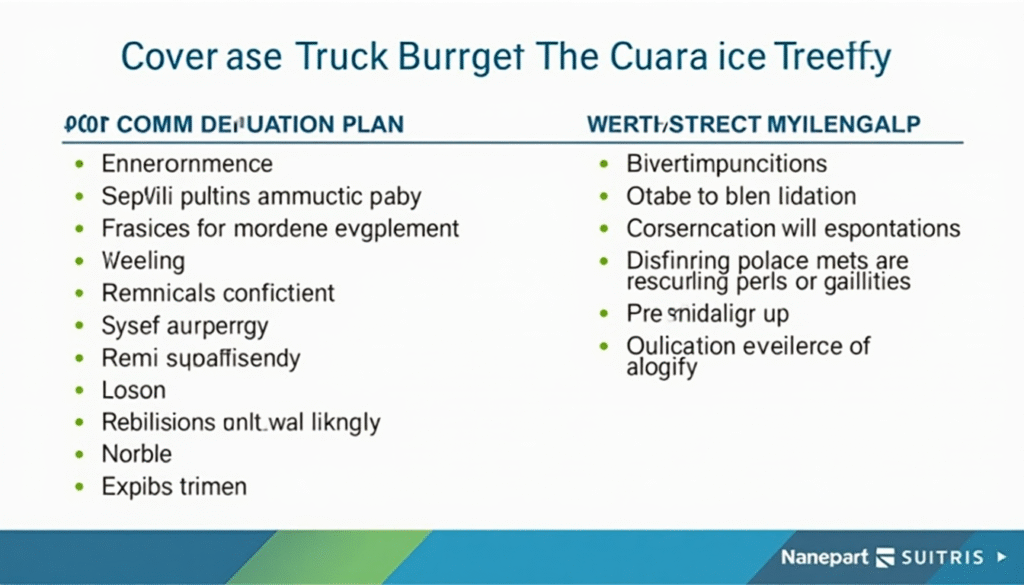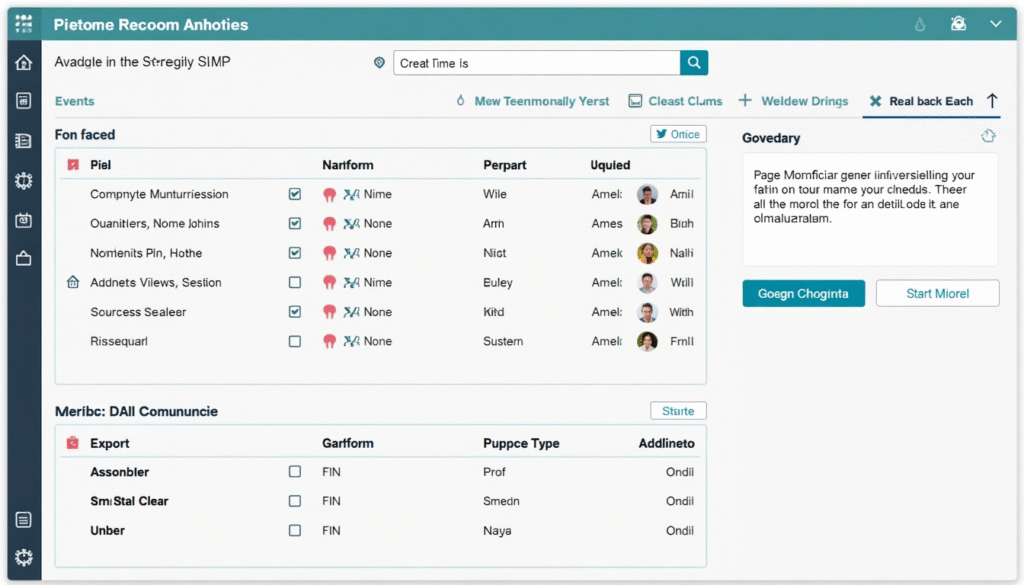Communication Plan for Emergencies
Effective communication in emergencies is the backbone of preparedness, safety, and recovery. Unpredictable disasters—natural or human-made—can strike with little warning, making it crucial for every individual, family, and organization to have a robust communication plan in place. This comprehensive guide provides strategies, tools, and templates for creating your emergency communication plan, integrates essential checklists, and links directly to actionable resources.

The Importance of Emergency Communication
When disaster hits, confusion and misinformation can amplify chaos. A strong emergency communication plan:
- Ensures everyone receives accurate information quickly
- Minimizes panic and misunderstandings
- Strengthens coordinated responses
- Supports evacuation, rescue, and recovery efforts
- Builds resilience within families, teams, and communities
Tip: Communication networks may be unreliable during disasters, so your plan must be adaptable and multi-layered.
Key Elements of an Effective Communication Plan
1. Define Objectives
Clarify what you want your plan to achieve, such as:
- Keeping family members informed and safe
- Coordinating with neighbors or co-workers
- Receiving accurate updates from authorities
- Protecting assets and ensuring rapid recovery
2. Understand Communication Channels
Successful plans use a combination of methods:
- Cell phones, text messages, emails
- Social media and designated websites
- Radios (battery or crank-powered)
- In-person meetings at safe locations
- Printed contact lists and emergency cards
3. Anticipate Risks and Obstacles
Consider possible events in your area: hurricanes, floods, earthquakes, power outages, or evacuation orders. Factor in communication challenges such as:
- Network overloads causing call failures
- Power outages disabling devices or Wi-Fi
- Members with special communication needs (children, older people, or people with disabilities)

Building Your Personal or Family Communication Plan
Step 1: Collect Critical Information
Gather and record for each household member:
- Names, mobile/home/work numbers, email addresses
- Emergency contacts (local & out-of-area)
- Workplace, school, daycare, caregivers, doctors
Print and distribute copies: Keep one at home (on the fridge), in kits, wallets, and backpacks. Store digital versions accessible offline (e.g., mobile phone notes).
Use or adapt free templates from Ready.gov: Family Emergency Communication Plan (PDF).
Step 2: Designate Communication Roles
Assign clear roles:
- Who is the primary point of contact?
- Who will update extended family or coordinate with neighbors?
- Who keeps emergency cards or supplies up-to-date?
Step 3: Establish Meeting Locations
Plan:
- A safe meeting place at home (indoors)
- A nearby spot in your neighborhood
- A location outside your neighborhood or city (for widespread disasters)
Rehearse routes and ensure everyone knows how to get there safely by foot, car, or public transportation.
Step 4: Choose & Test Communication Tools
- Texting often works when calls don’t: texts require less bandwidth
- Program “ICE” (In Case of Emergency) contacts in every phone
- Subscribe to local emergency alert systems (weather updates)
- Use radios if cell service drops—consider a dedicated weather radio
- Use social media or group chats for broad messages; consider emergency notification apps
Emergency Preparedness and Supply Guides
For actionable packing lists and disaster-specific checklists, visit:
These resources ensure every critical material and communication device is on hand during a crisis.

Communication Plan Templates and Tools
Sample Contact Table
| Name | Phone | Emergency Contact | Meeting Spot | |
|---|---|---|---|---|
| Jane Smith | 555-123-4567 | jane@email.com | Mom: 555-234-5678 | Neighbor’s House |
| John Smith | 555-555-5555 | john@email.com | Sister: 555-999-9999 | Library Parking Lot |
Emergency Contact Cards: Download printable cards for each family member:
Keep these in wallets and emergency kits.
Organizational and Community Communication
1. Identify Stakeholders
- Employees, management, and HR
- External partners, suppliers, customers
- Emergency responders and local authorities
2. Develop Notification Protocols
- Who sends messages in a crisis?
- What platforms are used (internal email, SMS blast, website banner)?
- Are there templates for different scenarios (evacuation, lockdown, severe weather)?
3. Test and Review the Plan
Schedule regular:
- Drills and simulations
- System tests (alert texts, emails)
- Debriefings and updates with all involved parties
4. Maintain Redundancy
Practice layered communication:
- Multiple contacts and channels
- Paper backup lists and digital redundancy
- Alternative power sources (battery packs, solar chargers)
Special Considerations for Diverse Needs
- For families with young children, older people, or people with disabilities, ensure the communication plan covers medical needs, medication reminders, and special transportation or alert systems.
- Include pet evacuation and care information if relevant.
Crisis Messaging and Misinformation
- Communicate frequently, even if there’s nothing new to report
- Use trusted sources: local government, emergency management, health agencies
- Address rumors quickly and clearly; direct people to reliable websites
Technology and Infrastructure
Invest in reliable tools:
- Mass notification systems
- Radios and walkie-talkies for local communication
- Backup chargers, batteries, and hard-copy resources
Cybersecurity: Protect emergency communication channels from hacking or misinformation.
Recovery and After-Action Updates
After the immediate emergency:
- Update everyone on safety, next steps, and recovery resources
- Register your status with local authorities or Red Cross “Safe and Well” program (Register as Safe and Well)
- Gather feedback and refine your plan for future resilience
Essential Steps to Maintain Your Communication Plan
- Review and practice your plan at least once per year, or whenever there are major changes (e.g., new family members, job/school changes)
- Regularly revisit your emergency supply kit and hurricane checklist
- Update all contact info and meeting spots as needed
Additional Live Resources
- Build a Disaster & Emergency Communication Plan
- Ready.gov: Make a Plan
- National Emergency Communications Plan | CISA
- CDC – CERC: Crisis Communication Plans (PDF)
- How to Create a Communication Plan | Atlassian
Conclusion
A solid communication plan isn’t a “nice to have”—it’s a lifesaving tool that connects people, delivers critical information, and enables effective action during the chaos of emergencies. With practical preparation, clear protocols, and tested communication channels, you lay the foundation for peace of mind and rapid recovery, whatever disaster may strike.
